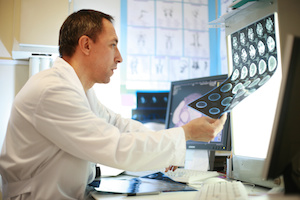A New York father has been acquitted of charges stemming from the tragic death of his 4-month old son, whose suspicious death led prosecutors to believe that Adrian Thomas had caused his child’s death by violently shaking him. As has become common in trials following suspicious death of infants, the Thomas verdict was heavily influenced by expert witnesses whose testimony assisted jurors in understanding the circumstances of the case.
Adrian Thomas Acquitted of Second Degree Murder Charges
Adrian Thomas received attention from police and prosecutors after his 4-month old son, Matthew, was found dead in September of 2008. After a 2009 guilty verdict that was dismissed on appeal due to an improperly obtained confession, prosecutors in Troy, NY again brought Mr. Thomas to trial, this time relying on testimony by medical experts to prove that Matthew’s death was caused by traumatic brain injury suffered as a result of being shaken. In response, Thomas’ attorneys argued that a bacterial infection in Matthew’s blood was the cause of his death, clearing their client of wrongdoing.
After both sides presented a number of medical expert witnesses to offer opinion on the cause of Matthew’s death, jurors determined that there was insufficient evidence to conclude that Mr. Thomas shook his son and cause his fatal injuries.
Prosecution Experts Argue Injuries Point to Shaken Baby Syndrome
New York prosecutors called medical examiner Michael Sikirica as an expert witness to testify that Matthew Thomas suffered from traumatic brain injury commonly seen in shaken baby syndrome. Dr. Sikirica noted that a subdural hematoma like the one Matthew experienced are most often caused by head injuries. Sikirica went on to testify that such injuries can be caused by rapid change in velocity that moves the brain back and forth, often indicating the infant is the victim of shaken baby syndrome.
Prosecutors argued that Dr. Sikirica, who performed Matthew’s autopsy, told the most important part of the story because he identified a cause of the child’s death. Arguing in closing that Dr. Sikirica’s testimony was “consistent with blunt force trauma,” prosecutor Christa Book pointed to her medical expert witness as a critical voice in the trial. To reinforce Dr. Sikirica, Ms. Book called on Dr. Carole Jenny to provide expert testimony after reviewing medical records. Dr. Jenny agreed with the medical examiner’s opinion, and testified to jurors that Matthew died of head trauma.
Defense Medical Expert Claims Bacterial Infection Led to Death
Defense attorney Stephen Coffey countered the prosecution’s argument by attempting to show that Matthew died after going into septic shock due to a bacterial infection in his brain. Dr. Jerome Klein, a medical expert from Boston University, was called to analyze Matthew’s injuries and provide opinion on his death. Dr. Klein acknowledged the possibility of head trauma, but pointed out that a brain infection could have caused the same symptoms and death. Dr. Klein’s testimony was designed to present a viable alternative theory of Matthew’s death, and he did so by explaining that the injuries the child suffered were not necessarily the result of shaken baby syndrome.
The Adrian Thomas case is yet another example of the questions debated by medical expert witnesses who are faced with a mysterious infant death that displays signs of head trauma. As blogged about here, shaken baby syndrome can result in hotly contested medical expert testimony, and in this particular case jurors were unconvinced that Matthew Thomas’ injuries were clearly caused by blunt force trauma. Prosecutors and defense attorneys faced with a shaken baby case need to be aware of the different types of expert witness testimony available, and employ a full array of medical experts to provide useful analysis to jurors.













